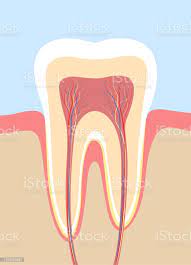
In the main period of your procedur, we start the day by evaluating your sedation choices (IV or Oral). During your medical procedure, Dr. Bhakta will take out any teeth requiring expulsion. The inserts are then positioned in the jaw bone, and your transitory, non-removable, full-set of teeth are appended. You leave with your embedded teeth and new smile! For the following a while, the embed and the bone circuit together. A enameldentistry.com crown is joined so you can eat and work typically during this mending period. In the last advance, full scaffolds are connected to the implants. Soon after you will feel reestablished trust in your new and solid grin!
A dental embed
Is a titanium screw that replaces the foundation of your normal teeth.Once the embed mends and breakers with the bone, it is more grounded than the first tooth and can undoubtedly be reestablished. Complete recuperating and combination with the bone typically requires 3-4 months. The medical procedure sounds difficult, yet it is typically simpler than the first extraction, as there is no painful injury to slow mending. Our patients regularly let us know that the medical procedure was a lot more straightforward and the recuperating less excruciating than anticipated. Ordinarily, just Advil is required for the gentle post-operation touchiness.
How Does the Procedure Work?
Crowns and scaffolds are finished in only two encounters with us! During your most memorable visit, Dr. Bethell will set up the tooth for a crown by eliminating any current rot or old filling material, supplanting it with new pitch material emulating the design of the tooth. He then plans and shapes the tooth for ideal maintenance so a crown can be put over the recently pre-arranged tooth structure. When formed, the pre-arranged tooth is carefully examined utilizing our best in class 3D scanners to catch everything about the ideal fit. This data is shipped off our lord ceramist, who then, at that point, hand layers zirconium to emulate a wonderful, regular tooth.
Outline of finish arrangement
Polish improvement includes two significant useful stages, secretory and development, with a short change between the two phases (403), albeit extra regions might include: presecretory, early secretory, late secretory, progress, preabsorptive, early development, and late development stages (17, 273, 299, 464, 524). All through this audit we center principally around the secretory and development stages as the main part of information accessible to date, on the emission of underlying framework proteins and proteinases, and on ionic vehicle, connects with these two phases.
The finish organ
Amelogenesis includes the development of various epithelium-inferred cell types. The deepest layer, the internal finish epithelium, is a solitary layer of cells that separate into ameloblasts. The furthest layer is likewise a solitary layer of cells, alluded to as the external finish epithelium. The internal and external polish epithelium meet at a locale called the cervical circle, which is a specialty for dental epithelial undifferentiated organisms (47, 204, 272, 336, 379, 380, 420) and in this manner gives a consistent wellspring of finish framing cells until the veneer crown is full grown with one exemption. In rat incisors, the long teeth in the upper and lower jaws, the undifferentiated cell specialty in the cervical circle is held forever, empowering the persistent development of these teeth.
